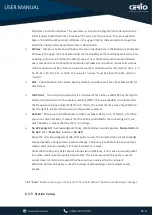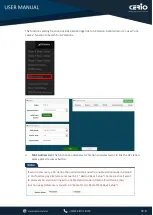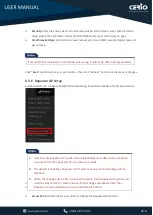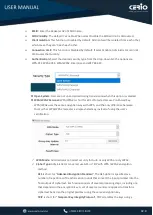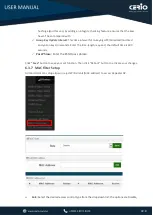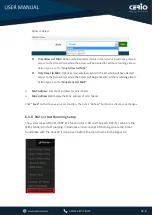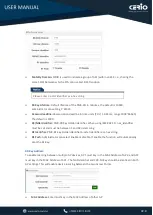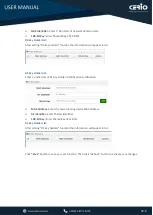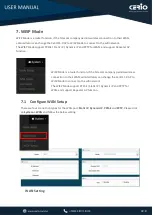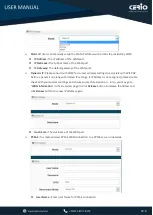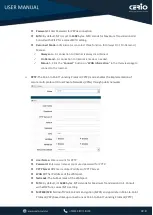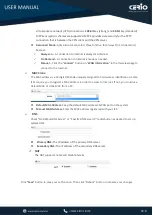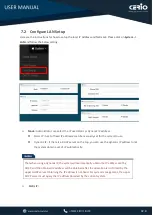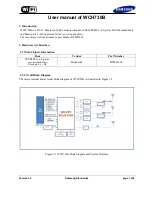
V2.0
interval, which increases the rate of beacons. This will make the association and roaming
process very responsive; however, the network will incur additional overhead and throughput
will go down.
DTIM Interval:
The DTIM interval is in the range of
1
~
255
. The default is
1
.
DTIM is defined as
Delivery Traffic Indication Message
. It is used to notify the wireless stations,
which support power saving mode, when to wake up to receive multicast frame. DTIM is
necessary and critical in wireless environment as a mechanism to fulfill power-saving
synchronization.
A DTIM interval is a count of the number of beacon frames that must occur before the access
point sends the buffered multicast frames. For instance, if DTIM Interval is set to 3, then the
Wi-Fi clients will expect to receive a multicast frame after receiving three Beacon frame. The
higher DTIM interval will help power saving and possibly decrease wireless throughput in
multicast applications.
Fragmentation Threshold:
Fragmentation Threshold is one more parameter which is given in
all stations and Access points. Fine tuning Fragmentation Threshold parameter can result in
good throughput but not using it properly can results in low throughput. In simple words it
does the same thing which MTU do in Ethernet. Both are different parameters but the work
done is same, it fragments the data packets.
Fragmentation threshold will be used when we have more data packet size to be transmitted
and we have less fragment threshold value. Let’s say from Ethernet we have to send 1400 byte
packet but the fragmentation threshold is set as 400. In this case when the packet is to be
transmitted on air it will fragment the packet in to 4 small packet 400+400+400+200 and send
on air. This includes MAC frame body and CRC so 400 byte will be in total including
headers. This helps in increasing the throughput. The default is 2346.
RTS Threshold:
TRTS Threshold is in the range of
1~2347
byte. The default is
2347
byte.
The main purpose of enabling RTS by changing RTS threshold is to reduce possible collisions
due to hidden wireless clients. RTS in AP will be enabled automatically if the packet size is
larger than the Threshold value. By default, RTS is disabled in a normal environment supports
non-jumbo frames.
Short Preamble:
By default, this function is “
Enabled
”.
Disabling
will automatically use the
Long 128-bit Preamble Synchronization field. The preamble is used to signal "here is a train of
data coming" to the receiver. The short preamble provides 72-bit Synchronization field to
improve WLAN transmission efficiency with less overhead.
IGMP Snooping:
The process of listening to Internet Group Management Protocol (IGMP)
network traffic. The feature allows a network switch to listen in on the IGMP conversation
between hosts and routers. By listening to these conversations the switch maintains a map of
which links need which IP multicast streams. Multicasts may be filtered from the links which do
Summary of Contents for SEFA OW-500 A1
Page 75: ...V2 0 ...
Page 146: ...V2 0 ...


















